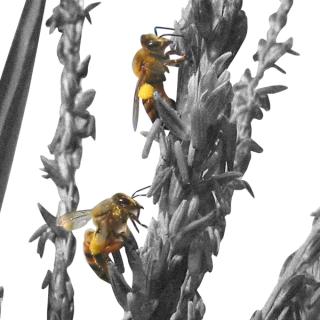An extremely polluted water body usually results in the slow death of the species inhabiting it. Researchers expected something similar would happen to the Elkhorn Slough, an estuary in California. Agricultural runoff in the region had led to an overgrowth of algae, which should’ve killed marine plants like seagrass. But, the plants continued to thrive — much to the (positive) consternation of researchers.
Brent Hughes, a biologist at Sonoma State University, overlaid the region’s sea otter counts with seagrass coverage data in one of many attempts to understand why seagrass was thriving. “You don’t see that very often in ecology. That was a eureka moment,” Hughes told The Guardian. According to Hughes, the presence of sea otters in the estuary had increased seagrass presence by more than 600% in the past three decades.
Hughes’ research, published in PNAS, found that the presence of sea otters essentially changed the food chain in the region. This ecological phenomenon, called a trophic cascade, results in changes in the population of predators and prey in the ecosystem structure.
Sea otters, for instance, must eat around 25-30% of their body weight in sea urchins, clams, and crabs daily in order to maintain their high metabolic rate. This means that there are less crabs around to eat sea slugs, who can then eat up up all the algae growing on the seagrass, keeping the plants healthy. The relationship between sea otters and the estuary ecosystem is symbiotic, with the marine mammals taking refuge in estuaries in order to protect themselves from predators like great white sharks.
Related on The Swaddle:
Seagrass Could Be A Powerful Weapon Against Climate Change, Natural Disasters: UN Report
The benefits that a heavy sea otter presence provides to seagrass, among others, is one of the many reasons they are deemed keystone species — that is, species that hold an ecosystem together. This isn’t exclusive to sea otters alone — river otters are also known to maintain river ecosystems and a healthy fish population by eating diseased fish.
Currently, there are only 3,000 sea otters left in the wild, making them heavily endangered. India currently hosts three out of thirteen existing otter species, with the population rates of all three facing rapid decline due to poaching and loss of habitat.
“Sea otter recovery is different from the recovery of any other species because they have such disproportionally big effects on the ecosystem,”Tim Tinker, co-author of the research and a wildlife biologist at the University of California, Santa Cruz, told the Guardian. He added, “For most depleted species you are just worried about the conservation of the species but with sea otters, you are thinking how the entire ecosystem is going to change when they recover.”




